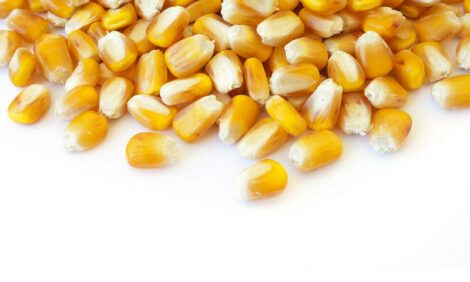



FAO Food Outlook: Meat and Meat Products
Global meat markets are challenged by high feed prices, stagnating consumption, and falling profitability, with growth in total output slowing down to two per cent, according to the FAO Food Outlook report for November 2012. With international prices close to record highs, growth in world trade is also decelerating.Meat and Meat Products: Market Summary
Struggling with high feed prices and stagnating consumption, global meat production in 2012 is forecast to grow by less than two per cent to 302 million tonnes. As falling industry profitability has translated into modest output gains in the developed countries, most of the world expansion is likely to take place in the developing countries, which now account for 60 per cent of world output. Virtually all of the sector growth in 2012 is forecast to stem from the feed-dependent poultry and pig meat sectors, as gains in both bovine and sheep meat outputs are anticipated to be modest.

Concerns about the profitability of the meat
sector have been compounded by a weakening of
the growth of export markets, with trade expansion
anticipated to slow down to two per cent from eight per cent
in 2011. Global meat exports are expected to edge
up by about 600 000 tonnes to 29.4 million tonnes in
2012, mainly sustained by increased poultry and pig
meat flows and with much of the market expansion
likely to be captured by developing countries, in
particular Brazil and India.
Escalating feed prices and slowing meat
production growth have pushed up international
meat prices in late 2012, to levels approaching the
highs attained in 2011. Accordingly, the FAO meat
price index, which has jumped by five per cent since
July 2012, averaged 174 points between January
and October, which compares with 176 for the same
period last year. Most of the recent increase in the
meat price index reflect price gains for poultry and
pig meat, which have soared by nine per cent and 12
per cent, respectively, since July.

(2002-2004 = 100)
Pig Meat
Disease recovery in Asia and a downsizing of operations in developed countries sustain pig meat production in 2012
Disease recovery in Asia and a downsizing of operations
through higher slaughter in many developed countries are
expected to translate into a two per cent increase in world
pig meat production to 110.8 million tons in 2012. This,
along with a build up of pig meat stocks in some countries,
is exerting short-term downward pressure on prices in some
local markets. The impact, however, is likely to be short-lived, with pig meat prices on international markets already
firming.
Herd liquidation is resulting in record slaughter and
output in the United States while negative margins in
Canada are behind pig farms bankruptcies and a contraction
of output. In the EU, restructuring of the sector to comply
with stringent welfare and environmental regulations is
resulting in lower production. In the Russian Federation,
the continued spread of African Swine Fever is anticipated
to slow down output growth to two per cent in 2012, which
compares with an average seven per cent in the previous four
years.
Nearly 90 per cent of output gains in 2012 will be in
the developing countries, specifically in Asia. In the region,
policy support in China, the world's largest producer, is
sustaining the sector expansion. A strong recovery from
last year's FMD-depleted supplies is boosting output in the
Republic of Korea while in Japan, output is returning to
pre-tsunami levels. In Viet Nam, policies and investments
in feed and processing are behind an expected five per cent
output increase. In Mexico, the sector is expanding,
underpinned by improved genetics and productivity, which
are translating into increased piglets per litter and higher
animal weights. On the other hand, a rapid decline in hog
prices is depressing production in Thailand.
Pig meat trade continues to grow but Asia remains on the side-lines
Stagnant consumption in traditional sources of exports,
such as in Canada, the EU and the United States, are
resulting in large excess supplies, which, along with firm
import demand, are expected to boost global pig meat trade
by three per cent to 7.4 million tons this year. Pig meat imports
by China, which surged in 2010 and 2011, in the wake of
disease outbreaks, have continued to grow despite early
year indications of adequate supplies and falling domestic
prices, and may end up six per cent larger by the end of the
year. The Russian Federation, Ukraine and Mexico are
also foreseen to step up their purchases. Japan's imports
are expected to record only a slight increase, as the sector
recovers from the tsunami-related losses in 2011. Smaller
volumes are forecast to flow to other Asian traditional
markets, reflecting a stalling consumer demand and
recoveries in production the Republic of Korea and the
Philippines. Purchases by Argentina are also forecast to
contract, as the recent resolution of a trade dispute with
Brazil will only restore product movement between the two
countries late this year.
As for exports, increased availability in the United States
is expected to boost US pig meat deliveries to a record 2.3
million tonnes, three per cent up from last year. Competitively
priced product in the EU could also facilitate an increase of
sales, despite this year's elimination of export restitutions for
pork. Developing country exports are also rebounding. For
instance, shipments from Brazil are recovering following
the lifting of Russian restrictions on pig meat from a
number of processing units and a diversification of sales to
other markets, in particular Hong Kong SAR, Ukraine and
Angola. Sales by non-traditional exporters, such as Chile and
Mexico, are also expected to rise, even sharply, in the case
of Mexico, assisted by its newly recognised status as free of
Classical Swine Fever. Shipments from Belarus are also set
to increase, facilitated by a newly negotiated Customs Union
with the Russian Federation.

Further ReadingYou can view the full report by clicking here. |
November 2012








